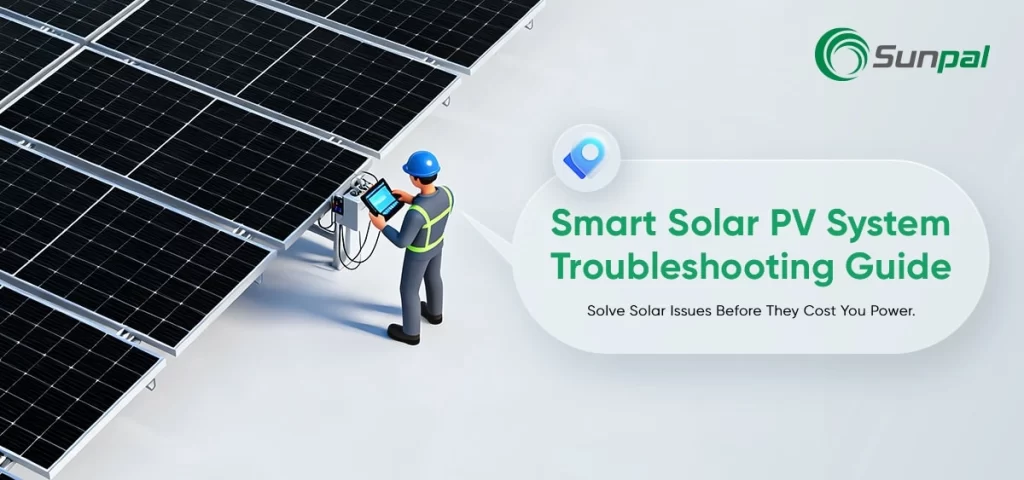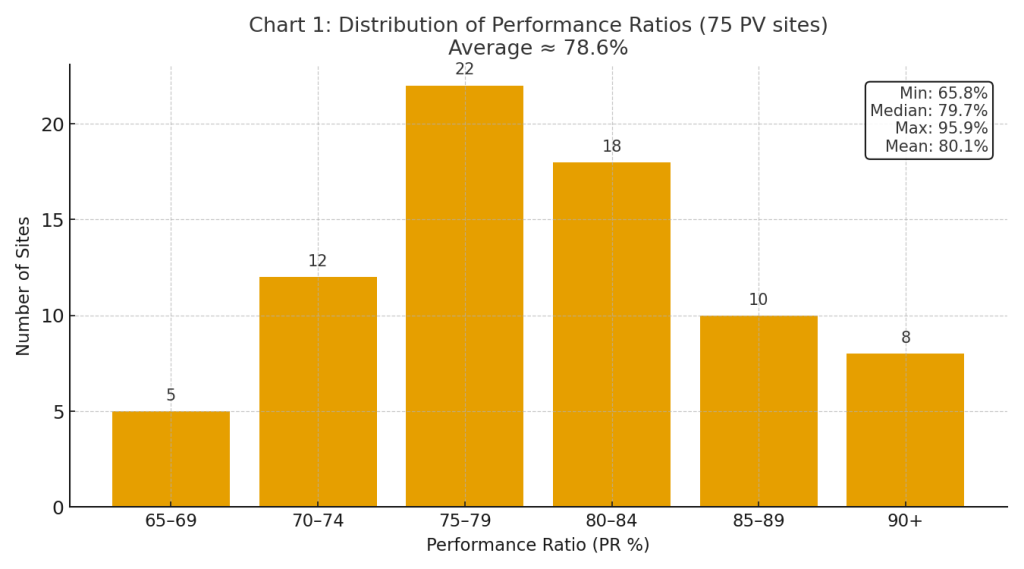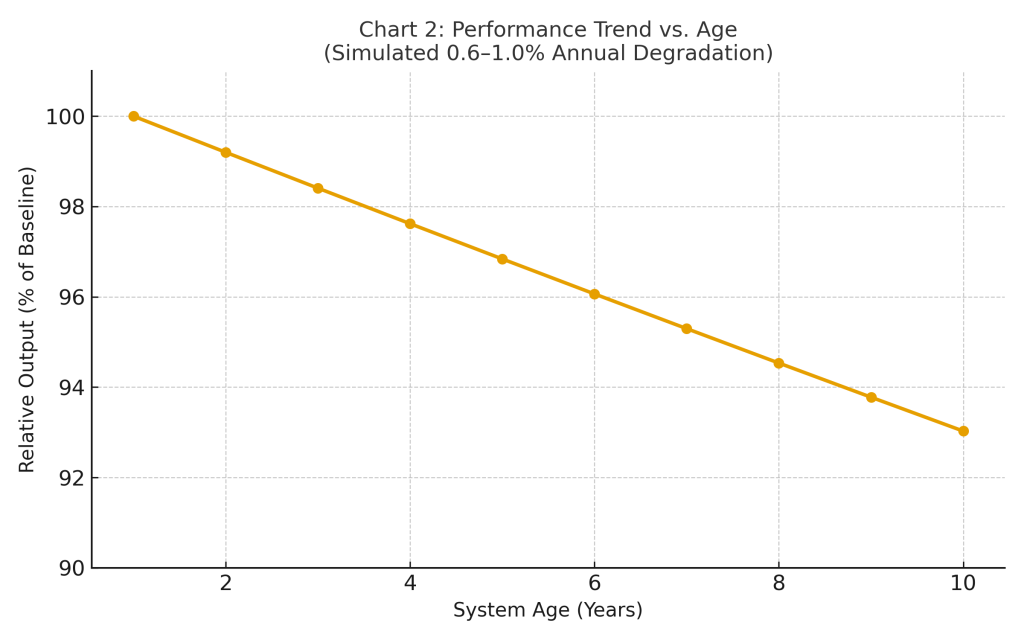
Why DIY Solar System Diagnosis Matters — and What You Gain
Solar energy adoption has surged across commercial and residential sectors, but many owners panic when output dips. Instead of rushing to call a technician, a systematic DIY diagnosis can save time, cost, and downtime.
By using a clear troubleshooting flowchart, operators and service teams can spot faults—such as inverter errors, panel-soiling, PID (potential-induced degradation), or string wiring issues—faster and more reliably. With real-time monitoring and basic tools, you can often isolate the problem before engaging expert help.
Solar PV Anatomy in 60 Seconds
Understanding the key components helps you know where faults hide:
- PV panels / modules — generate DC power
- Combiner box / junctions & wiring — connect panel strings
- Inverter / microinverters — convert DC → AC, report error codes
- Battery / charge controller (for hybrid systems)
- Monitoring & SCADA system — track outputs, detect anomalies
Power flows: Sunlight → panels → DC wiring → inverter → AC to grid or load.
When any segment fails or degrades, overall system output drops.
Top 5 Common Failures in Solar PV Systems
| Fault Category | What Happens | Quick Symptom | Root Causes / Notes |
| Panel Soiling / Shading | Power drop across array | Sharp decline midday output | Dust, bird droppings, nearby obstruction |
| Inverter Errors | System offline or limited operation | LED indicator red, error codes | Overheating, firmware glitch, AC breaker trip |
| Wiring / String Faults | One string underperforms | One panel string output zero | Loose connectors, corrosion, module mismatch |
| PID / Module Degradation | Gradual performance loss | Downward trend over months | Voltage stress, humidity, module faults |
| Battery / Charge Controller Fault | No charge or discharge | Battery voltage abnormal | Over-discharge, temperature extremes |
In research of PV parks, degradation trends pushing PR below 80% are alarmingly common, lengthening ROI and signaling hidden faults.
Chart 1: Distribution of Performance Ratios (75 PV sites, average ~78.6 %)

Sunpal's Troubleshooting Flowchart Walkthrough
Below is an overview of the decision tree. You can contact Sunpal to get a more detailed infographic:
1. Is system output zero?
- Yes → check inverter main switch, AC breaker, grid connection
- No → go to step 2
2. Are inverter LEDs / error codes active?
- If red/error → log code, refer to inverter manual
- If green → go to step 3
3. Check PV string-level outputs (via monitoring or junction boxes)
- If one string reads zero → inspect wiring/connectors
- If all strings low → go to step 4
4. Assess solar irradiance & shading / soiling
- Compare to expected insolation (clear-sky models)
- Clean modules; remove shading sources
- If performance still low → step 5
5. Check battery / charge controller (if applicable)
- Measure battery voltage / temperature
- Inspect charge/discharge curves
6. Evaluate module health (PID, degradation)
- Use trend data from monitoring system
- Consider module replacement or insurance claim
Safety note: Never open live DC junctions or touch exposed wiring without correct PPE.
Deep Dive: Flowchart Paths Explained
1. Panels & Soiling / Shading
If midday irradiance is high but output is low, soiling or shade is likely the culprit. In dusty or arid zones, module cleaning may need to be monthly.
Gradient of output drop across strings often maps to shading patterns. Use handheld irradiance sensors if available.
2. Inverter Diagnostics
Many inverters report fault codes—thermal shutdown, over-voltage, under-voltage, communication errors. Match codes with manufacturer documentation. Check AC breaker, fuses, and main switch as first response.
3. Wiring & String Integrity
Using a DC multimeter, measure open-circuit voltage (Voc) or short-circuit current (Isc) per string. A zero or “open-circuit” reading suggests a wiring disruption or disconnected module.
4. Battery / Charge Controller (for hybrid systems)
Bad batteries or controllers can cause abnormal charging curves or no discharge. Use voltage, current logs from BMS or SCADA.
5. Module Degradation & PID
If panels lose performance steadily despite clean and well-operated system, suspect PID or module aging. In the studied PV parks, PR often drops from 90 %+ to sub-80 % over years.
Chart 2: Performance Trend vs. Age (simulated curve showing 0.6–1% annual degradation)

When DIY Isn't Enough — Call In the Experts
Some symptoms require professional intervention:
- Fire or signs of arcing
- Sealed inverter internal faults
- Persistent PR < 70% despite nominal conditions
- Warranty or insurance claims needing qualified inspection
At this point, you can call Sunpal for a full diagnostic and repair service, backed by certified technicians and access to OEM tools.
Proactive Maintenance to Prevent Failures
- Monthly module inspection & cleaning schedule (adjust by local climate)
- Real-time monitoring alerts — flag sudden drops
- Annual full system checks — wiring, torque, PV health
- Firmware updates & inverter calibration
- Trimming or removing new shading growth (trees, constructions)
O&M (operations & maintenance) best practices often allow systems to keep availability > 95 % and efficiency (PR) > 85 %. In federal PV analysis, average availability was 95 % while measured PR was ~78.6 %.
Conclusión
A solar PV system rarely fails catastrophically. Most performance issues emerge from shading, module soiling, inverter faults, wiring glitches, or gradual module decline (e.g., PID). With Sunpal's step-by-step troubleshooting flowchart, operators gain a powerful, SEO-friendly resource to diagnose and triage issues before expensive service calls.
Contact us to download the fully annotated infographic or to get expert support. Empower your solar installation to deliver peak energy, always.
